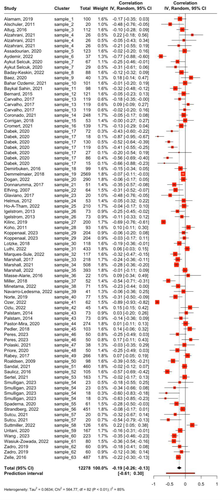
BERNARD Paquito
- Physical activity sciences, Institut de recherche en santé, environnement et travail (UMR_S Inserm 1085), Rennes, France
- Exercise & Sports Psychology, Physical Activity
- recommender
Recommendation: 1
Review: 1
Recommendation: 1

Structural vulnerability factors and gestational weight gain: A scoping review on the extent, range, and nature of the literature
Structural vulnerability factors and gestational weight gain in high-income countries
Recommended by Paquito Bernard based on reviews by Kelsey Dancause, Kadia Saint-Onge and 1 anonymous reviewerThis manuscript presents a compelling scoping review examining the structural vulnerability factors associated with gestational weight gain. The topic is highly relevant because excessive gestational weight gain is prospectively associated with an increased risk of gestational diabetes and perinatal mortality.
The authors employed excellent search strategies to address an area that is often overlooked, as structural vulnerability factors are generally understudied or not the primary focus in many existing studies.
A total of 157 academic articles were included in the scoping review. The authors identified eight frequently studied structural vulnerability factors: race/ethnicity (58% of articles), age (55%), parity (31%), education (28%), income (25%), marital status (18%), immigration (12%), and experiences of abuse (physical, psychological, or sexual) (8%). Most studies were conducted in the United States of America, employed retrospective designs, and examined diverse populations in which a subgroup or the entire sample experienced one or more structural vulnerability factors.
This work makes a significant contribution to understanding the role of structural vulnerability factors in gestational weight gain. It highlights the critical impact of systemic inequalities on the health of pregnant women and underscores the importance of addressing these disparities. Furthermore, the manuscript thoughtfully discusses the methodological challenges and limitations in the current literature, particularly in considering interacting structural vulnerability factors and social identities.
From my perspective, this work provides a more detailed and nuanced analysis of structural vulnerability factors in the context of gestational weight gain than previous reviews. This review will undoubtedly serve as a valuable resource for clinicians and researchers, inspiring them to adopt an ‘intersectional lens’ in their future practices and research projects.
Review: 1

Kinesiophobia and physical activity: A systematic review and meta-analysis
Evidence of the Association between Kinesiophobia and Physical Inactivity
Recommended by Jasmin Hutchinson based on reviews by Paquito Bernard and 1 anonymous reviewerThis article (Goubran et al., 2024) presents a comprehensive systematic review and meta-analysis examining the relationship between kinesiophobia and physical activity. The inclusion of multiple health conditions and diverse measures of physical activity and kinesiophobia provides a broad perspective on the issue.
Kinesiophobia (i.e., an excessive, irrational, and debilitating fear of movement) is thought to contribute to negative affective associations towards physical activity and avoidance behaviors, leading to decreased engagement in physical activity. Thus, the relationship between kinesiophobia and physical activity merits further investigation, particularly in health conditions where physical activity has a preventative and/or therapeutic role.
The results of this meta-analysis (k = 83, n = 12,278) indicate a small-to-moderate negative correlation between kinesiophobia and physical activity (r = −0.19; 95% CI: −0.26 to −0.13; I2 = 85.5%; p < 0.0001.) Substantial heterogeneity and publication bias were noted, but p-curve analysis suggested true effects. Notably, this finding was consistent across studies using both self-report and objective device-based measures, and there was no evidence of a moderating effect of different measurement instruments or physical activity outcomes.
Subgroup analyses revealed that the negative association between kinesiophobia and physical activity is significant in patients with cardiac, rheumatologic, neurologic, or pulmonary conditions but not in those with chronic or acute pain. This latter finding underscores the need to distinguish kinesiophobia from pain. Understanding that the fear of pain, injury, or aggravating an underlying condition, rather than actual pain, is associated with physical inactivity is important to consider when developing interventions to promote physical activity. Tailored interventions that address kinesiophobia specific to different health conditions could enhance physical activity levels and improve health outcomes. Further research is needed to explore the mechanisms underlying kinesiophobia and evaluate the efficacy of targeted interventions to mitigate its impact.
This article makes an important contribution to our understanding of the relationship between kinesiophobia and physical activity. It provides evidence that fear of movement can be a barrier to physical activity in certain health conditions and highlights the need for condition-specific approaches to address this issue. This work is highly relevant for clinicians, researchers, and public health policymakers aiming to improve physical activity levels and overall health outcomes in a variety of populations.
References
Goubran, M., Farajzadeh, A., Lahart, I.M., Bilodeau, M. & Boisgontier, M.P. (2024). Physical activity and kinesiophobia: A systematic review and meta-analysis. MedRxiv, version. 3 peer-reviewed and recommended by Peer Community in Health and Movement Science. https://doi.org/10.1101/2023.08.17.23294240